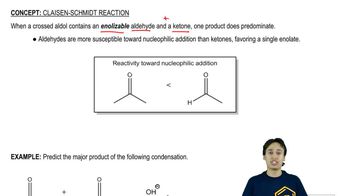Textbook Question
Show how you would use an aldol, Claisen, or another type of condensation to make each compound.
(e)
 Verified step by step guidance
Verified step by step guidance Verified video answer for a similar problem:
Verified video answer for a similar problem:


 2:10m
2:10mMaster Claisen-Schmidt Reaction with a bite sized video explanation from Johnny
Start learning